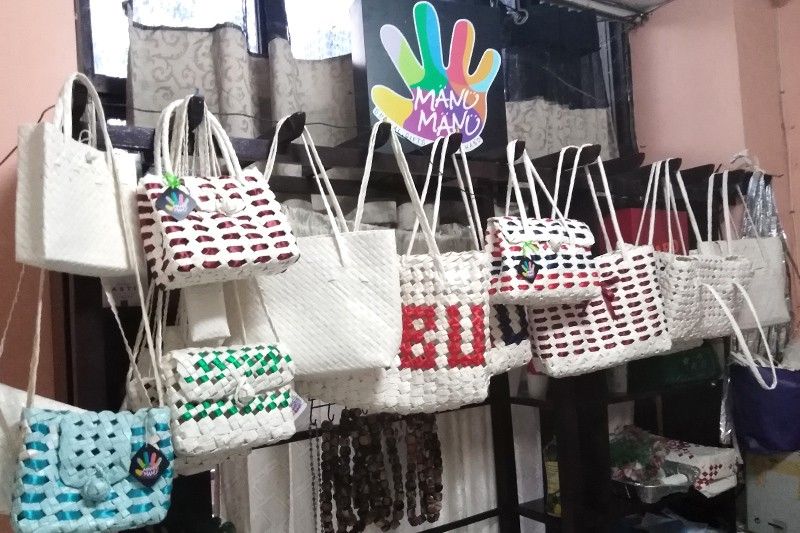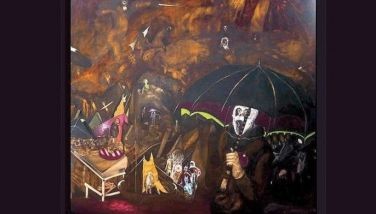Coping with COVID-19 crisis: Barangay Luz, the lockdown and me

CEBU, Philippines — It was a bleak Tuesday afternoon that warned of another rainy sky in this part of Cebu City when I got the confirmation of a phone interview appointment with our barangay captain, Ronilo “Ronie” Sab-a. Part of a dutiful requirement for my graduate studies, conducting this interview through the phone seemed to be the only choice due to the COVID-19 crisis. With the ‘forceful’ advice of my family at home, a face-to-face appointment was not an option.
The appointment set was at 4:30 pm. After a series of text messages and confirmation from his secretary that he has arrived at the office, I called.
I introduced myself and told him I was very grateful for being granted the interview at a very short notice. His friend, the school director of the technical-vocational school I am a mentor of and my main connection to his office, arranged this with his secretary, Ms. Mila, only that morning. But in less than two minutes through the phone conversation, Kap Ronie suddenly said that he prefers a personal meeting in his office, explaining that he finds it hard to listen and talk over the phone. Avoiding a lump of dead air, I simply said, rather hesitant, “Okay, Kap. I’ll be there in a while.” Goodbye, phone interview, and sorry, my sisters—I need to do this interview “face-to-face.”
So I hung up, got my mask and face shield, and headed off to Barangay Luz’s Hall. In less than a hundred strides, I was there. His office is actually just right beside our residence’s complex. We are only a “high wall” apart.
COVID-19 has definitely changed the way we do things and look at people and events. What used to be so near now seemed so far. It made us enter something like a “warp” zone where you must be conditioned to follow some new rules. . . Distance yourself from the people you meet or talk to. Why isn’t this person wearing a mask? Is this person coughing before me infected? Do I spray alcohol first on the metal doorknob before entering? What is the protocol again on physical distancing? 1 or 2 meters? And perhaps a thousand questions more keep nagging in our heads. What has become of us during this so-called global health emergency crisis? Are you and I better or worse?
I have visited the barangay hall before the pandemic struck, to report about a lady who was lying naked on the street on my way home. There are usually many bystanders outside the main door at the ground floor, with a few vendors still trying to sell their food stuff to the barangay employees who lounge in the open area. But this afternoon was different. No vendors were in sight. Only one staff greeted me by the main door as I entered. She said Kap Ronie’s office was at the second floor. Going up, I met three ladies, possibly barangay office workers, on their way home. When I reached the second floor landing, I was greeted by a male staff who said that Kap was waiting inside the conference room. I saw him right away since the room had glass walls. And then, I saw Ms. Mila, his secretary, coming out. She was very cordial and greeted me, then led me inside the conference room. Kap Ronie was waiting. I greeted him in Cebuano, and he greeted me back. Without any warm handshakes, he asked me to sit down, and we restarted the interview.
In the late 1950s, Barangay Luz was originally a relocation site for victims of fire in the city. Named after Mrs. Luz Magsaysay, the wife of the late President Ramon Magsaysay who helped in the relocation, Barangay Luz started housing thousands of Cebuanos and quickly became a slum area at the heart of Cebu City.
Kap Ronie grew up in this neighborhood. He told me that if he were to be asked how he would describe this barangay he had grown to love, he would reply: Ours is a history of struggle: the struggle to own their respective individual home lots.
From being dubbed as the dirtiest barangay in the city to being touted as a model barangay because of its best practices and commitment to sustainability and entrepreneurial management, Barangay Luz has risen to be the home of resilient Cebuanos: men and women who know where they want to go and who they want to be. However, before all these, the hurdles to surpass were issues that seemed insurmountable: drug addiction, robbery, garbage management, frequent community fires and unemployment, among others.
So, how did Barangay Luz do it? What made this big turnaround possible? Kap Ronie attributed it to what he calls participatory government and transparency. With proactive and supportive guides in the political arena, the barangay officials went to work. They made partnerships with private organizations that are committed to education, transfer technology and sustainability. This resulted in various projects for women and the youth, one of which is dubbed as Mano-Mano: Handcrafted Art Made From Waste.
The International Pharmaceuticals Inc. (IPI) became one of the barangay’s staunch supporters. Providing waste materials like plastic, paper and straw, the female constituents of the barangay were taught how to turn these into woven, handcrafted items like bags, purses, fashion accessories and office file organizers. This project generated jobs and uplifted the economic condition of Barangay Luz’s families. Currently, these products are being showcased at the second floor of the barangay hall.
Aside from the Mano-Mano project, the Rotary Club of Guadalupe also provided sewing machines and leftover cloth materials for these to be turned into rags. Again, this provided livelihood opportunities to mostly women constituents of the barangay.
When the pandemic struck in March of last year, operations for livelihood had to be halted. But the good news is, the demand for the products the women started making continued somehow. While practicing physical distancing and other health protocols, sewing leftover cloth materials continued in their respective homes.
Another livelihood project for women came about because of the barangay’s partnership with the Banilad Center for Professional Development (BCPD), a technical-vocational school which taught women constituents how to cook and bake, sell their products, and become entrepreneurs in the process. This was dubbed as The Megamoms Project. With or without the COVID-19 crisis, the food business of the Megamoms group continued to generate income for the families of the barangay’s ladies who joined forces with them. The Megamoms currently own an eatery space along Archbishop Reyes Avenue.
For programs empowering the youth, the Technical Education and Skills Development Authority (TESDA) partnered with the barangay by providing full scholarship opportunities for those interested to learn short courses in automotive, driving, cosmetology and tailoring. With only 15 interested applicants, a vocational course can start running in the nearby TESDA training facility. The search for TESDA scholars among the youth of the barangay is an ongoing project.
You may call it miraculous, but yes, the barangay and its people have found a way to survive during this crisis. Hitting the headlines in March 2020 with one of its sitios, Zapatera, under strict lockdown due to more than a hundred infected individuals, the number of COVID-19 recoveries has increased considerably. Even with the continuing challenges, Barangay Luz residents have taken on the reins of their lives and learned to be steadfast in fighting for what can make them survive.
Kap Ronie says, “We are officially counted as a tourist destination now, recommended by the Department of Interior and Local Government to be visited by foreigners who wish to know about sustainable practices adopted by the urban poor in the city.”
You may or may not believe it, but before the pandemic, there had been tourist buses parked outside the barangay hall. Foreigners were being toured inside the small halls of the barangay just to see the handcrafted products of the Mano-Mano project.
The road to success may still be far off before this barangay can fully rise as a strong and respected constituency in the city. However, one thing is for sure. With the proactive and persistent attitude of its people, embracing success—as we know it, may actually just be waiting around the bend.
As I wrapped up the interview, I thanked Kap Ronie for sharing his time and stories with me. What I heard from him that afternoon served as an eye-opener for me. I realized that I do not know my barangay that much. I have never walked its inner streets long enough. I did not mingle with enough Barangay Luz people to say that I know what their aspirations are, the difficulties they are going through and what they are capable of doing to help themselves rise out of poverty. Strangely, I felt I needed to know more.
All of a sudden, it seemed the pandemic has lost its power.
Walking back home, wearing my face shield and mask, I muttered to myself . . . perhaps, another visit will not hurt.
Note: Barangay Luz is currently on lockdown since January 26, 2021, following a spate of COVID-19 infections reported from several sitios. Despite this, Barangay Luz is hopeful that its constituents shall recover from this fresh adversity, as we continue to wage this battle against the coronavirus.
(Michelle C. Salon is a Graduate Student, Master in Development Communication, from the University of the Philippines Open University.)
- Latest
































